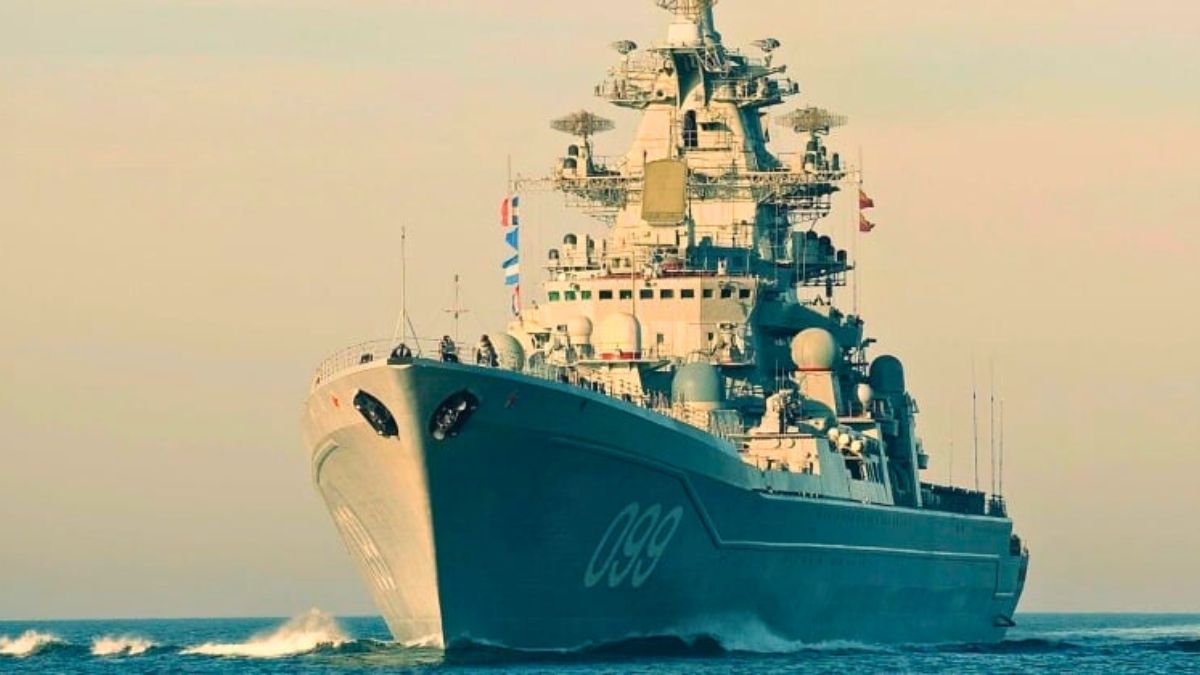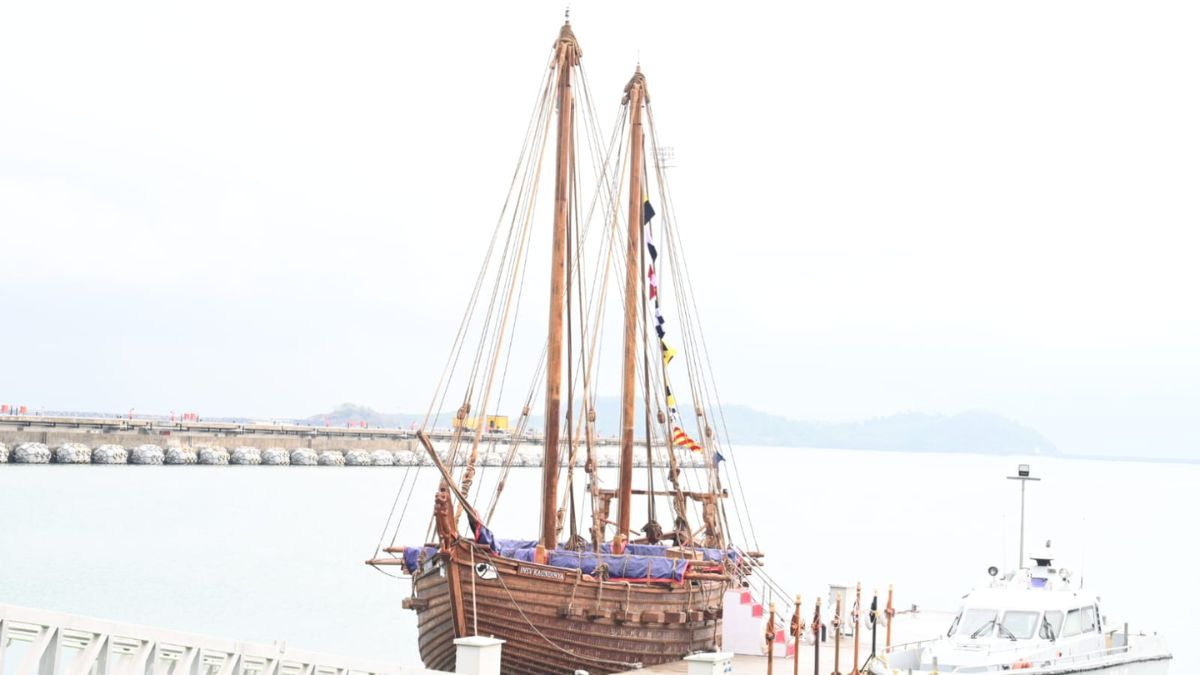Admiral Nakhimov Returns: Russia Revives Its Nuclear Battlecruiser for Modern Warfare

The 28,000-ton warship, equipped with two nuclear reactors, completed critical reactivation trials earlier this year (Image courtesy: X.com/@peacemaket71)
After nearly three decades out of service, Russia’s nuclear-powered battlecruiser Admiral Nakhimov has re-entered the water, moving under its own power for the first time since 1997. The milestone, achieved in August 2025, underscores Moscow’s determination to revive its blue-water naval power amid heightened global tensions.
The 28,000-ton warship, equipped with two nuclear reactors, completed critical reactivation trials earlier this year, with the United Shipbuilding Corporation (USC) confirming successful progress to President Vladimir Putin on August 18.
According to Russian state media, the Admiral Nakhimov will now replace its sister ship, Pyotr Velikiy, as the flagship of the Russian Northern Fleet.
How has the long road back to service been?
Originally laid down in Leningrad in 1983 as Kalinin, the ship was launched in 1986 and entered service in 1988. It belongs to the Project 1144 Orlan-class, known in NATO designation as the Kirov-class battlecruisers, a formidable line of nuclear-powered surface combatants built during the Cold War.
Renamed Admiral Nakhimov in 1992, after famed Russian Admiral Pavel Stepanovich Nakhimov, the vessel was considered one of the most powerful surface ships of its era, designed to counter US carrier strike groups with long-range missiles, heavy armor, and extended endurance.
However, the collapse of the Soviet Union left the ship underfunded and neglected. When it last went to sea in 1997, it was soon laid up at Sevmash shipyard in Severodvinsk, where it languished for years.
Attempts to modernise it began in 2014 but were repeatedly delayed. Originally projected for 2018, its return was postponed multiple times — 2019, 2020, 2021, and then 2023 — until its eventual reactivation in 2025.
Why does Russia need the Admiral Nakhimov today?
In the current strategic climate, the return of Admiral Nakhimov carries significant geopolitical weight. Russia’s navy has faced serious setbacks in the Black Sea during the ongoing conflict with Ukraine, with losses to Ukrainian missile and drone attacks exposing vulnerabilities.
While the battlecruiser itself is unlikely to deploy in such shallow and contested waters, its presence in the Northern Fleet enhances Russia’s ability to project power in the Arctic, North Atlantic, and Barents Sea.
The Arctic, in particular, is becoming a zone of renewed great-power competition. With melting ice opening new shipping lanes and NATO expanding its presence in Scandinavia, Moscow sees Admiral Nakhimov as a critical asset in deterring Western naval forces.
Nuclear propulsion gives the warship near-unlimited range, while its updated Project 1144.2M modernisation reportedly equips it with advanced radar, long-range cruise missiles, and enhanced air-defence systems.
The Admiral Nakhimov also serves a symbolic role. By reviving a Soviet-era leviathan, Russia signals both technological continuity and strategic resolve despite Western sanctions. It demonstrates Moscow’s intent to maintain a surface fleet capable of challenging NATO’s maritime dominance.
What are the strategic implications of Russia’s Nakhimov revival?
While critics argue that large surface ships are vulnerable to modern precision strikes, the Admiral Nakhimov’s modernisation suggests Russia still values heavy nuclear-powered cruisers as prestige assets and strategic deterrents.
Its future missions will likely focus on flagship duties, Arctic patrols, and power projection rather than frontline combat in contested littorals.
Ultimately, the return of the Admiral Nakhimov highlights Moscow’s effort to adapt Cold War naval icons to 21st-century warfare, balancing symbolism with strategic necessity.







